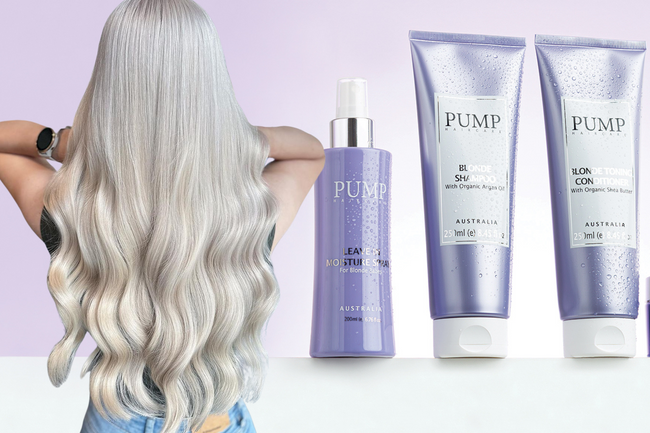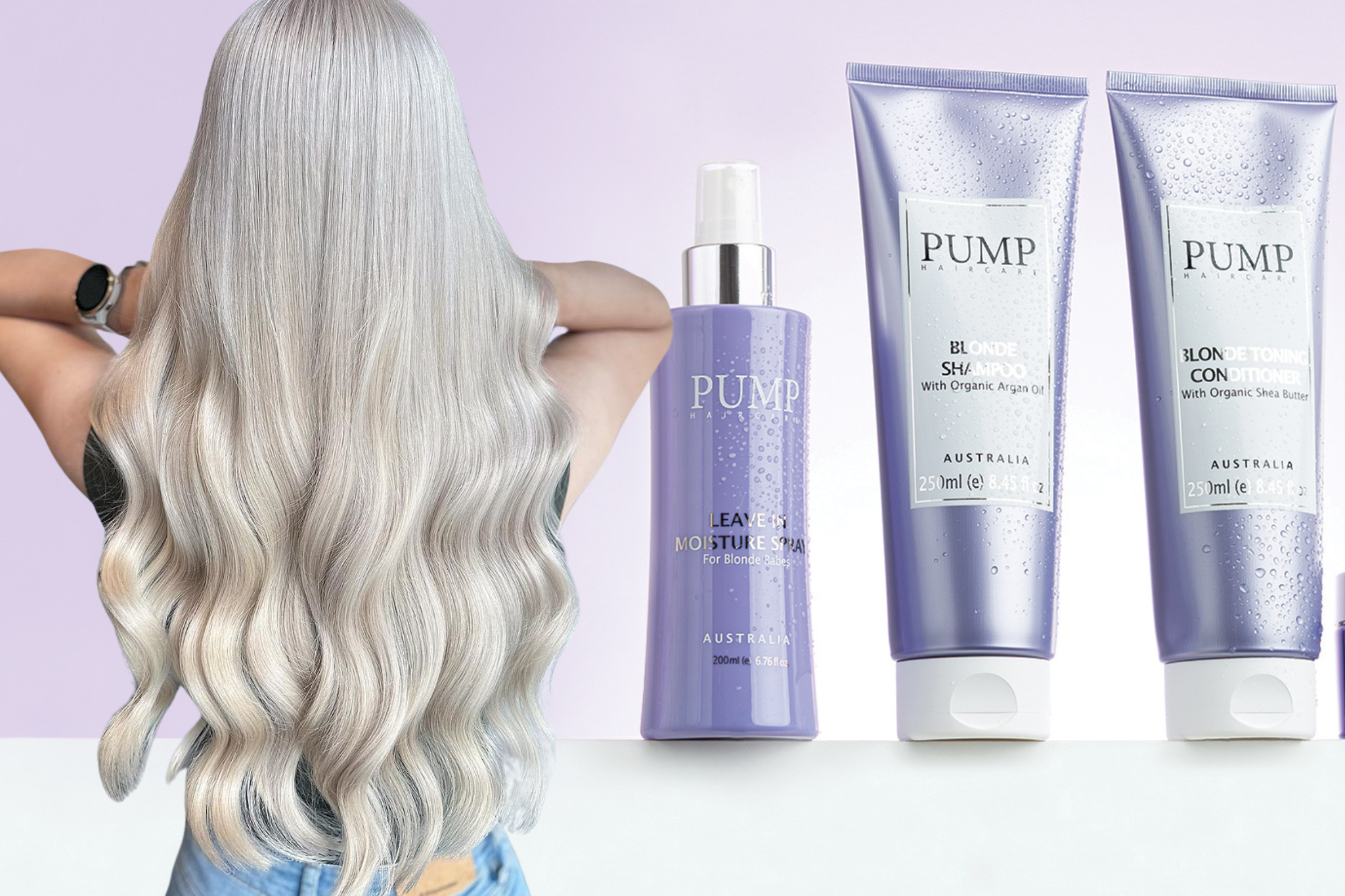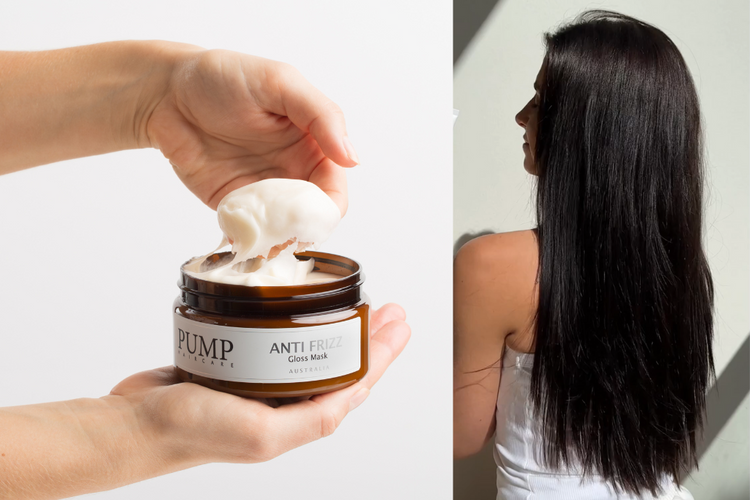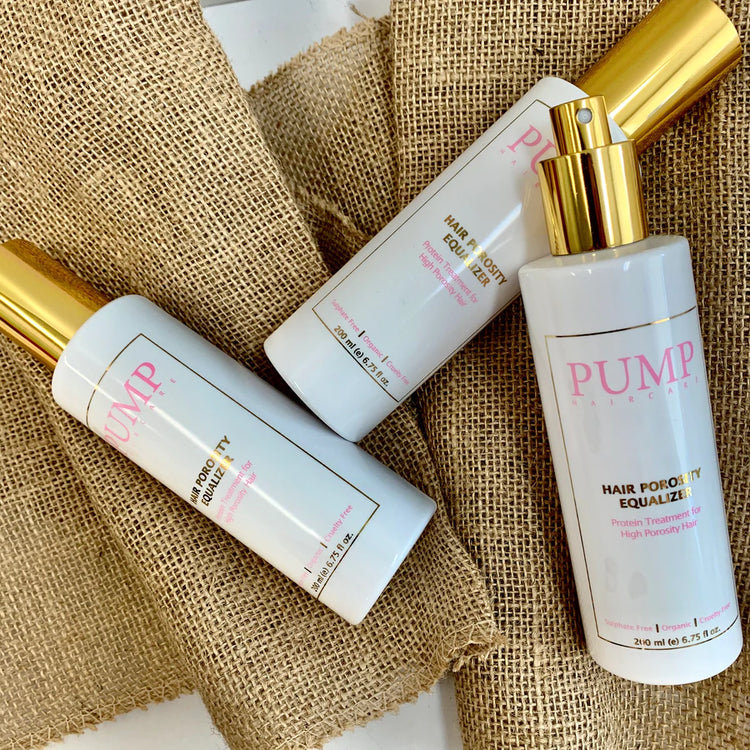If you are looking to bleach your hair, it is important to understand natural hair levels and the stages of lightening dark hair before dyeing it. Hair levels are the base level your natural hair sits at and are categorised from levels 1-10, with 1 being the darkest shade of black to 10 being the lightest shade of blonde. Below we have broken down the different levels for you to see which one you are as well as discussed the best practices when it comes to bleached hair.
The Hair Colour Depth Chart
Level 1 -3 (black to dark brown)
This is the darkest level out of all the natural hair colours. Due to this, achieving a platinum blonde shade without significantly damaging your hair is difficult; it will also require multiple bleach sessions to achieve the desired levels of lift.
Level 4-6 (medium to light brown)
Compared to levels 1-3, it will be easier to bleach your hair if you have medium to light brown as you may only require 1-2 bleach sessions to get the hair colour you want.
Level 7-10 (light to platinum blonde)
Having light blonde hair as your natural tone will make it easy to achieve platinum blonde colours and will most likely only need one bleaching session.

How to Know Your Natural Hair Level?
Before you begin the dyeing process, it's important to identify which hair colour level you are. There are several ways to determine this:
Consult a Professional:
The surest way to identify which hair colour level you have is to consult a hairstylist as they will be able to determine your natural hair levels as well as discuss how many sessions you will need to achieve the desired levels of lift.
Use a Hair Colour Chart:
You can also use a hair colour chart to match your hair colour level and determine the levels of bleaching needed to achieve light blonde.
Natural Lighting:
Another tip is to look at your hair in natural light as darker shades will show up lighter in the sun. You can also compare it to reference images to get a better idea of where you sit.
The Levels of Bleached Hair (Stages of Lightening Dark Hair)
During the bleaching process, there are four stages your hair will undergo as progressively lightens. The number of sessions needed to pass through the stages will depend on which level you begin with. Here is a breakdown of each stage:
1. Dark to Reddish Tones:
If you are beginning with dark brown to black hair (levels 1-3), you will notice after the first bleach your hair turns into a reddish or orange colour. This is known as the “brassy stage” in the bleaching process.
2. Reddish to Yellow Tones:
After the first bleaching stage, your hair will begin to lighten from reddish tones to yellow. If you are beginning with hair colour levels (4-6) you may notice the transition to this stage quicker than if you have darker hair.
3. Yellow to Pale Yellow:
As you progress through the stages of hair lightening, the yellow tones will become a pale yellow or whiter shade.
4. Pale Yellow to Platinum Blonde:
This is the final stage of the bleaching process; you should use a toner at this stage to get rid of any unwanted brassy or yellow tones to achieve a white, platinum blonde colour.
 How long does it take to get to your desired bleached level?
How long does it take to get to your desired bleached level?
How long it takes to reach the desired bleached level depends on several factors, such as:
Natural Hair Level:
As discussed above, your natural hair’s starting point is predictive of how many bleaches you will need to achieve the desired levels of lift. Dark brown or black hair will need more bleaching sessions, typically spread out over a few weeks to not excessively damage the hair cuticles.
Bleach Strength:
What bleaching agents you are using can also impact how many times and how long you will have to bleach your hair. Whilst you can use a stronger bleach for faster results, it can damage your hair significantly. It is recommended to see a hair specialist when it comes to bleaching your hair as you can significantly damage the hair cuticle and cause breakage if you are not careful.
Hair Condition:
Healthy hair bleaches more easily and more effectively than damaged or previously dyed hair.
Technique:
What technique is used in the bleaching process can also determine how long and how many bleach sessions it takes to get to the desired colour.
Factors Affecting Bleaching Colour Levels
As discussed above, your natural hair level, the bleaching agents, what condition your hair is in before you dye it and the techniques can all affect how well your hair reacts to bleach. Another consideration is the toner you use to achieve the platinum blonde look.
Tips for Bleached Hair: Do’s and Don’ts
To maintain your ideal colour and keep your hair as healthy as possible, there are several do’s and don’ts to achieve this:
Do’s:
Sulphate-free Shampoo or Drying Products
Sulphates strip your hair of its natural oils and moisture making it more prone to breakage or damage. Opting for a sulphate-free shampoo or hair care products without drying alcohols will help to protect your hair. Additionally, using a sulphate-free toning shampoo or conditioner can help get rid of unwanted brassy or yellow tones.
Deep Conditioning
Using a hair mask once a week will help seal in moisture and act as a protective barrier against further damage. Using a mask that is designed for blonde hair will help maintain the white tones.
Protective Styling
When it comes to styling your hair, dry your hair on the cool air setting or consider air drying to reduce how much heat your hair is exposed to.
Regular Trims
Having regular trims will help to remove any split ends and keep your bleached hair from splitting up the hair shaft.
Use a Heat Protectant
When styling your hair, using a heat protectant adds an extra layer of protection against heat damage and creates a barrier against moisture loss.
Cold Water Rinse
Make sure to wash your hair with cold water as it will seal in your hair cuticle, preventing colour fading and heat damage.
Gentle Detangling
Bleach hair achieves its colour by stripping the hair cuticle of its pigments and keratin proteins, this makes it prone to breakage. For this reason, you should use a wide-tooth comb or your fingers to gently detangle your hair.
Don’t’s:
Overuse Heat Tools
Avoid excessive use of heat styling tools or using hair dryers on the hot setting to protect your hair from further damage.
Excessive Washing
Overwashing your hair is a common culprit to causing further hair damage. Washing your hair once a week should be sufficient, however, everyone is different so adjust the frequency as needed.
Hot Showers
Hot water will open your hair cuticle, making it vulnerable to moisture loss. This will also cause the coloured pigments to fade.
Harsh Hair Products
Using hair products that are drying, harsh or not blonde-friendly can cause your hair colour to fade and unnecessary damage to the hair cuticle.
Ignoring Roots
Your natural hair colour will begin to show as your hair grows in; if you want to maintain your bleached colour, it is best to have touch-up sessions with a hair stylist to keep a consistent look.
DIY Colour Corrections
Bleaching your hair is a technical process that requires the proper knowledge and tools to do it without significantly damaging your hair. It is best to have a colourist professional do it for you to achieve the best results.
The Bottom Line
Having bleached hair means taking a lot of factors into consideration as well as taking the proper steps to ensure you don’t cause significant damage to your hair. It is always recommended to work with a hairstylist if you have not bleached your hair before to ensure the best results are achieved with the least amount of damage. Using appropriate products, deep conditioning and practising healthy hair care practices will keep your hair happy and healthy whilst maintaining the bleached look you are after.
Common FAQs about Understanding Levels of Bleached Hair:
What level is my hair after bleaching?
What level your hair is after bleaching will depend on which level you began on, and how many bleach sessions you have done. If you begin with levels 1-3, you may be in the brassy or yellow stage after your first bleach. To get the desired levels of lift, it is best to leave it to a professional to do it for you or to consult a professional colourist to determine how many treatments are needed to achieve the desired results.
How to bleach hair to level 10
If you are wanting to bleach your hair on your own, here are the steps you can follow:
Prepare Your Hair
Make sure your hair is in good condition and has not had any previous colour treatments. If you have, it is best to consult a professional before attempting to bleach your hair as you can risk excessive damage to the hair cuticle if done incorrectly.
Section Your Hair
Begin to divide your hair into smaller sections for an even application.
Mix Bleach and Developer
Follow the instructions when mixing the bleach and developer, using a non-metallic bowl.
Apply the Bleach
Beginning at the base of your hair, begin to work your way up to the roots evenly. Avoid overlapping bleach onto sections you have already put bleach on.
@elliecelli Should I talk about more bleaching tips? #bleachedhair #bleachingmyhair #hairtok #dyingmyhair #healthyhairtips ♬ original sound - ELLIE | HAIR | FESTIVALS | UGC
Monitoring
Continually monitor your hair throughout the processing time and check as it begins going through each stage. The maximum time you want to leave it in is 30-40 minutes. If the ideal tone is not achieved by this point, you may need to do a repeated session after giving your hair a week to two weeks of rest in between treatments.
Rinse and Tone
After bleaching your hair, rinse your hair with cold water and use a toner to get rid of any unwanted brassy tones.
Conditioning Your Hair
After you have rinsed your hair out, apply a deep conditioning treatment such as a toning hair mask to bring moisture back into your hair.
Maintenance
If you have achieved the light blonde colour you are after, follow the dos and don’ts mentioned above to maintain the colour and health of your hair. Otherwise, repeat the steps mentioned above until you are satisfied with the results.
How many bleach levels does virgin hair need?
As discussed above, it depends on where you sit on the 1-10 bleach chart. However, virgin hair will also take to the bleaching agents better than previously dyed hair.
How many levels can you lighten your hair through bleaching?
How many levels you can bleach your hair is dependent on factors such as your natural hair colour and what condition your hair is in before bleaching. Seeking professional colourist advice is the safest way to achieve your specific hair colour goals.
What’s the longest you can leave bleach in your hair?
Always follow the recommendations of the product manufacturer's instructions, however as a general rule of thumb, bleaching processing times range from 30 to 40 minutes max. If you are unsure or nervous about bleaching your hair, it is best to have a professional do it as if done incorrectly, you can cause significant damage to your natural hair.




